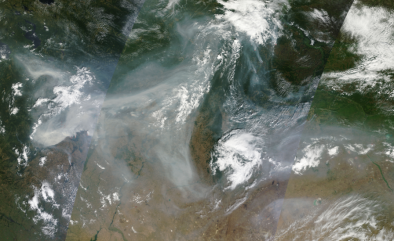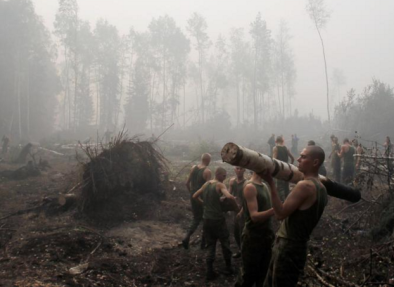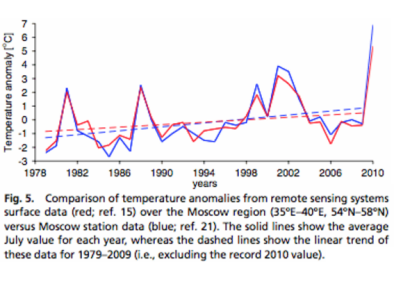Science Source
Wildfires Dynamics in Siberian Larch Forests
- Studies wildfire number and burned area temporal dynamics within all of Siberia and along a south-north transect in central Siberia (45°–73° N) based on NOAA/AVHRR (National Oceanic and Atmospheric Administration/ Advanced Very High Resolution Radiometer) and Terra/MODIS (Moderate Resolution Imaging Spectroradiometer) data and field measurements for the period 1996–2015
- Also analyzes fire return interval (FRI) along the south-north transect was analyzed
- Finds that both the number of forest fires and the size of the burned area increased during recent decades (p < 0.05)
- Finds significant correlations between forest fires, burned areas and air temperature (r = 0.5) and drought index (The Standardized Precipitation Evapotranspiration Index, SPEI) (r = −0.43)
- Finds that within larch stands along the transect, wildfire frequency was strongly correlated with incoming solar radiation (r = 0.91)
- Finds that fire danger period length decreased linearly from south to north along the transect
- Finds that fire return interval increased from 80 years at 62° N to 200 years at the Arctic Circle (66°33’ N), and to about 300 years near the northern limit of closed forest stands (about 71°+ N) and that the increase was negatively correlated with incoming solar radiation (r = −0.95)
Related Content
Science Source
| Doklady Earth Sciences
Blockings in the Northern Hemisphere and Euro-Atlantic region: Estimates of changes from reanalyses data and model simulations
I. I. Mokhov, M. G. Akperov, M. A. Prokofyeva et al
Headline

Apr 11, 2016 | Think Progress
Russian President Medvedev: “What is happening now in our central regions is evidence of this global climate change, because we have never in our history faced such weather conditions in the past.”
Headline

Apr 11, 2016 | Reuters
Heat, smoke sent Russia deaths soaring in 2010: govt
Headline

Apr 11, 2016 | Think Progress
Bombshell: Study Finds 80% Chance Russia’s 2010 July Heat Record Would Not Have Occurred Without Climate Warming


